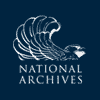Charles Caldwell to James Madison, 11 October 1826
From Charles Caldwell
Lexington (Ky) October 11th. 1826.
Dear Sir,
Your obliging letter, of the 20th. ultimo, has been duly recieved, and claims my acknowledgments for its politeness towards myself, and its liberality towards the subject to which it relates.
To me it is peculiarly gratifying to learn, that in whatever part of the world Phrenology is correctly made known, it uniformly finds friends, and none but friends, among the enlightened and truly liberalized; and that it stands indebted for every enemy that has appeared against it, to prejudice, interest, or want of information. Search the history of it since its first annunciation, and you will find this to be true to the letter.
Two facts may be stated in relation to it, which appear to me to speak a language not easily resisted. No one has ever faithfully studied it, without becoming a proselyte to it; and no proselyte has ever apostatized. To these may be added a third, which is not without weight. Of the individuals who have given themselves to the pursuit of it, those most devoted to the exact sciences, have become also most ardently and steadfastly devoted to it. As far as I have been concerned in teaching it, my most mathematical, logical, and matter-of-fact pupils, have been most easily proselyted, and have become most warmly attached to the science.
When to these considerations we add, that, in Europe, it is spreading with a rapidity unprecedented, and a force that appears, at present, irresistable; that in most of the chief towns in Great Britain and Ireland, and in many of those, on the continent, lectures on it are publicly delivered and numerously attended; that such distinguished Savans as Blainville,1 St. Hillaire,2 Abernethy,3 Chalmers,4 Home,5 and many others, are among the active advocates of the science; that even Jeffery6 himself, its inveterate arch-enemy, is staggered in his infidelity, and beginning to change; and that most of the British Journals that speak of it at all, although they once opposed it, speak of it now in terms of approbation. When all these facts, I say, are taken into view, and deliberately weighed, they furnish, in behalf of Phrenology, a mass of testimony that can scarcely fail to insure its triumph over all opposition.
In case of your wishing still further to cultivate an acquaintance with the science, permit me to recommend to you the following works. Spurzheim’s Phrenological system,7 a large octavo volume, difficult to be procured, Combe’s Phrenology,8 with Bell’s notes, reprinted in this country, Transactions of the Edinburgh Phrenological Society, and the Edinburgh Phrenological Journal. Those works, read as you always read, will give you a thorough, at least a very competent, knowledge of the Science; and permit me to assure you, that the gratification derived from the perusal of them, will predominate greatly over the labour and trouble.
Let me ask your acceptance of the two pamphlets that accompany this letter.9 They may serve for the amusement of an hour of leisure, when other more interesting objects may be wanting. I need not say that your opinion of any thing I may ever write will always command my peculiar respect. In relation to the present productions, there are special reasons why it would be highly acceptable to me. By that class, which I consider the ultra-theological orthodox of the day, some exceptions have been taken to them. Accept, I entreat you, a reiterated assurance of my most distinguished and cordial consideration and regard.
Ch. Caldwell
RC (DLC). Docketed by JM.
1. Henri Marie Ducrotay de Blainville (1777–1850) was a French naturalist who lectured and published on zoological topics and comparative anatomy. He was a professor at the Museum d’histoire naturelle, 1830–50, and a member of the Academie des sciences (Gillispie et al., Dictionary of Scientific Biography, 2:186–87).
2. Augustin François César Prouvençal Saint-Hilaire (1779–1853) was a French entomologist and botanist who collected and published studies on a vast number of samples taken from the flora and fauna of Brazil. He was professor in the Faculté des sciences, 1830–53, and a member of the Académie des sciences (ibid., 12:72).
3. John Abernethy (1764–1831) was an English surgeon and anatomist of great reputation. He was elected a member of the Royal Society in 1796.
4. Thomas Chalmers (1780–1847) was a Scottish evangelical clergyman who held the chair of moral philosophy at the University of St. Andrews, 1823–28, and chair of theology at the University of Edinburgh, 1828–43.
5. Everard Home (1756–1832) was an English surgeon and student of comparative anatomy who published widely on both subjects. He was a fellow of the Royal Society and a member of the Royal College of Surgeons, serving as master in 1813 and as its first president in 1822 (Gillispie et al., Dictionary of Scientific Biography, 6:478–79).
6. Francis Jeffrey (1773–1850) was the founder and editor of the influential Edinburgh Review. Jeffrey visited the United States in 1813 and met with JM; for Jeffrey’s account of their conversation, see , 7:46–49.
7. Johann Gaspar Spurzheim, Phrenology, or The Doctrine of the Mind; and of the Relations between Its Manifestations and the Body, 3rd ed. (London, 1825).
8. George Combe, Essays on Phrenology, or An Inquiry into the Principles and Utility of the System of Drs. Gall and Spurzheim, and into the Objections Made against It (Philadelphia, 1822; 8405).
9. The two pamphlets have not been identified, but one was probably Caldwell’s Correspondence between Dr. Charles Caldwell, of the Medical School of Transylvania University, and Dr. James Fishback, Pastor of the First Baptist Church of Lexington (Lexington, Ky., 1826; 23987).

![University of Virginia Press [link will open in a new window] University of Virginia Press](/lib/media/rotunda-white-on-blue.png)
